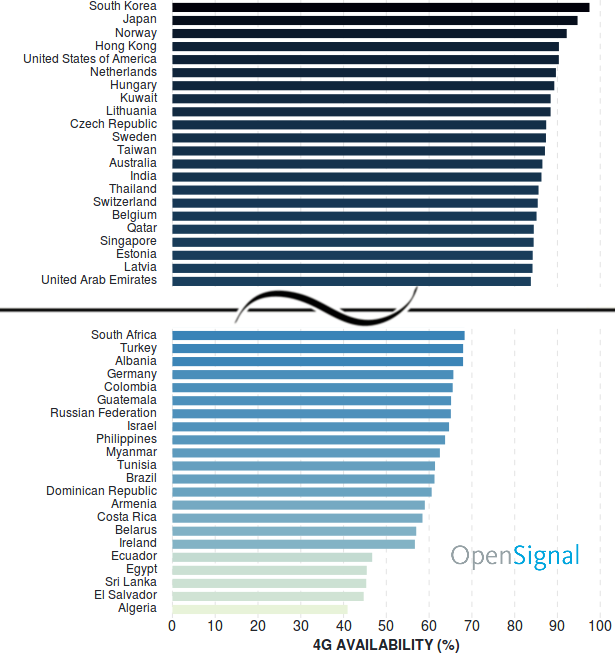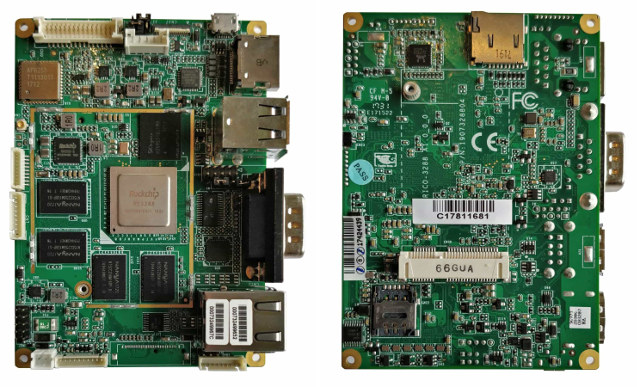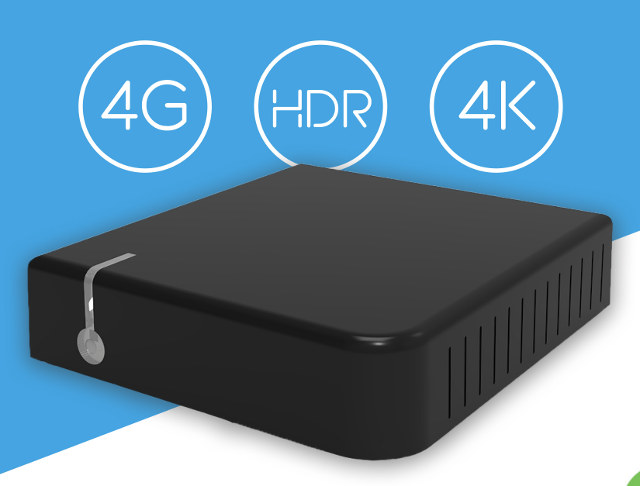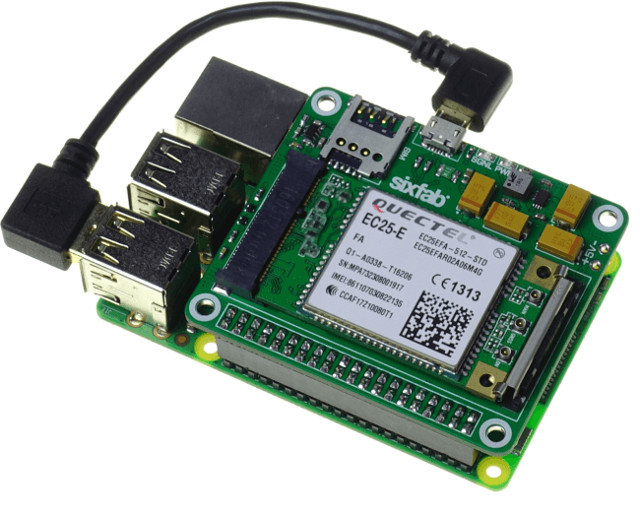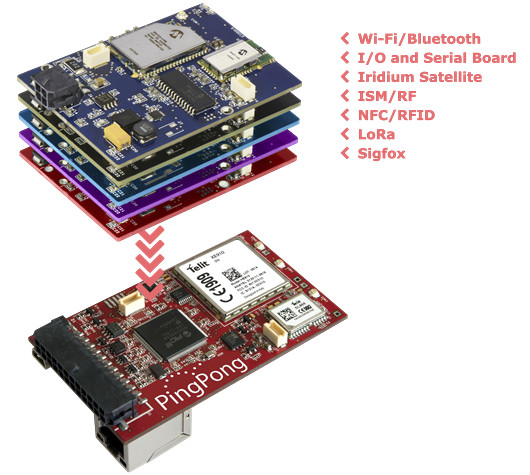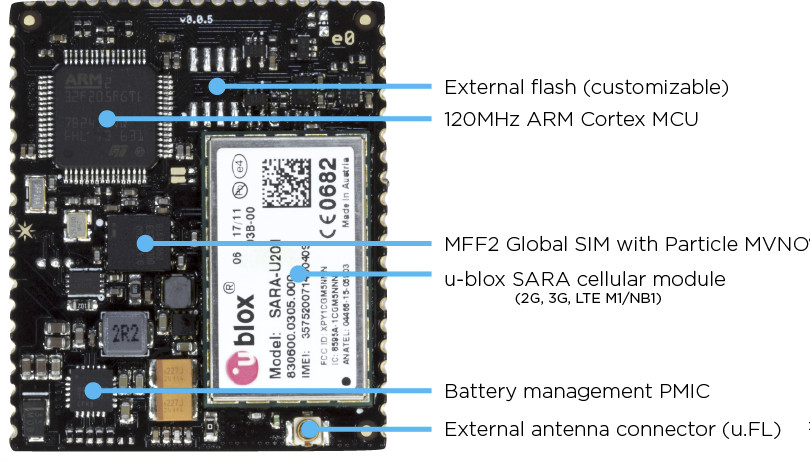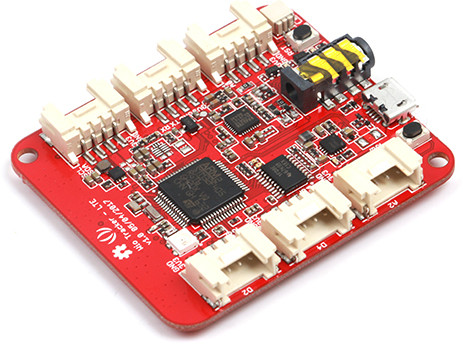We may be starting to see more news about 5G technology whose deployment should start in 2019, but 4G LTE coverage and performance depends very much where you live, as we can see from a recent State of LTE report by OpenSignal which gathered close to 60 billions data points out of almost 5 millions phones aroudn the world during the last three months of last year. The new data shows 4G average speed in the top performing country seems to have hit a plateau at around 45 Mbps, but availability keeps on improving across the board. The reports generated two main charts, with the first reporting 4G networks availability per country, not in terms of geographic coverage, but instead OpenSignal tracked the proportion of time users had access to a particular network. 5 Country now have over 90% availability with South Korea, Japan, Norway, Hong Kong, and the United […]
Amarula Vyasa is a $150 Pico-ITX Single Board Computer Powered by Rockchip RK3288 SoC
Yesterday, as I published Linux 4.15 changelog for Arm and MIPS, I discovered a new Rockchip RK3288 platform described as “Amarula Vyasa single board computer”, so that got me interested. The full name of the company is “Amarula Electronics Limited Sony UK”, which means Vyasa is the name of the board. Amarula Vyasa relies on a 2.5″ Pico-ITX form factor, and is available in either commercial and wide temperature (WiTAS) range. The board is equipped with 2GB RAM, 16GB eMMC flash, exposes ports and connectors such as HDMI 2.0, eDP, and LVDS, and plenty of network connectivity (WiFi, Ethernet, mPCIe modem…) that would make it suitable for a connected digital signage, or other applications requiring a (touchscreen) display and redundant Internet / network connectivity. Amarula Vyasa specifications: SoC – CPU Rockchip RK3288 (ARM CortexTM -A17 Quad-core 1.6GHz) System Memory – 2GB DDR3L SDRAM Storage – 16GB eMMC flash, Micro SD […]
WeTek Unveils Hyperion 4G LTE Set-Top Box & Nix OTT TV Box Running Android TV OS
When Geniatech announced Android TV certification for their ATV598Max set-top box with digital TV tuners compliant with DVB-T2, DVB-C, ATSC, or ISDB standards earlier this week, we noticed how few official Android TV STB there was on the market. But more may be coming, as Wetek will showcase two Android TV products at CABSAT in Dubai on January 14-16 with Wetek Hyperion Amlogic S905D 4G LTE set-top box, as well as WeTek Nix OTT box powered by Amlogic S905X processor. WeTek Hyperion Specifications: SoC – Amlogic S905D quad core ARM Cortex-A53 SoC up to 1.5 GHz, with penta-core ARM Mali-450 GPU System Memory – 2GB DDR3 RAM Storage – 16GB eMMC 5.0 flash Video & Audio Output – HDMI 2.0a (CEC, HDR, HDCP 1.4/2.2), mini jack analog AV output Connectivity Gigabit Ethernet Dual band 802.11 ac/b/g/n WiFi (optional 802.11ac MiMo) Bluetooth 4.0 4G LTE modem – LTE-FDD: B2/B4/B5/B12/B13/B17/B25/B26; LTE-TDD: B41; […]
SixFab Launches Raspberry Pi 3G-4G/LTE Base Shield V2 for $31.20
Development boards with 4G LTE are still quite expensive, at least compared to 2G or 3G solutions, with for example Wio LTE GPS Tracker board selling for around $100. So when I saw Sixfab introducing a 3G/4G shield for Raspberry Pi 3 for just $31.20 (pre-orders), I first thought it was an incredible deal. But I soon realized I missed the “base” word in the name, as the shield just includes the SIM card slot, and mPCIe connector where you can connect Quectel’s UC20-G Mini PCle 3G module or EC25 Mini PCle 4G/LTE Module which adds respectively $59 or $89 to the price. That’s still an interesting HAT board, so let’s have a look. Raspberry Pi 3G-4G/LTE Base Shield V2 specifications: Clip-in Mini PCIe socket for: 4G/LTE Module (Quectel EC25) up to 150Mbps downlink and 50Mbps uplink data rates, GPS/GLONASS 3G Module (Quectel UC20) up to 14.4Mbps downlink and 5.76Mbps […]
PingPong IoT Development Board Supports Cellular Connectivity, WiFi, Bluetooth, LoRa, Sigfox, and More
Round Solutions, a supplier of products, services and concepts for industrial M2M and IoT markets, has introduced PingPong IoT development board with either Microchip PIC32MZ running an RTOS, or PIC32MZ DA running Linux, and equipped with a Telit modules for either 2G or 3G cellular + GNSS connectivity. The board can also support WiFi, Bluetooth, ISM/RF, NFC/RFID, LoRa, Sigfox, Iridium satellite, and serial interface thanks to a range of expansion boards. PingPong IoT board specifications: MCU / Flash RTOS version – Microchip PIC32MZ 32-bit Microcontroller @ 200 MHz, with 512 KB RAM and 2 MB Flash Memory + 4 MB external memory Linux version – Microchip PIC32MZ DA (Full specs TBA) Connectivity Cellular connectivity Telit xE910 module with 2G, 3G and/or 4G LTE (coming soon) Data GSM/GPRS – Uplink/Downlink: 9.6 kbps UMTS – Downlink: 384 kbps, Uplink: 384 kbps HSPA+ – Downlink: 42.0 Mbps, Uplink: 5.75 Mbps LTE – Download: 100 […]
Mictrack MT600 4G GPS Tracker Supports Traccar, OpenGTS, and Other GPS Tracking Platforms
Cellular GPS trackers have been around for a few years, but so far mostly 2G or 3G GPS trackers with products like Ping, Particle Asset tracker, and many other models selling on Aliexpress. 4G GPS tracker have been less common. However, recently we’ve seen platforms like Wio LTE and AutoPi that could handle GPS tracking over LTE connectivity, and another alternative would be Mictrack MT600 that ready-to-use solution to track your car or other vehicle with GPS and 4G. Mictrack MT600 hardware specifications: GNSS U-BLOX7 GPS Chip GPS sensitivity -162dBm Channel – 56 Positioning Accuracy – 10m Cold start: 30s; warm start: 15s; hot start: 1s SMA antenna connector Cellular Connectivity Qualcomm 4G LTE chip MT600-A model (North America): 4G FDD LTE: 700/850/1700/1900MHz 3G UMTS: 850/1700/1900MHz GSM: 850/1900MHz MT600-C model (Asia): 4G FDD LTE: 900/1800/2100MHz 4G TDD LTE: 1900/2300/2500/2600MHz 3G UMTS: 900/2100MHz GSM: 900/1800MHz MT600-E (Australia/Asia/Europe) 4G FDD LTE: 800/850/900/1800/2100/2600MHz 3G […]
Particle E Series is a Family of 2G, 3G, 4G LTE Cellular IoT Modules Optimized for Mass Production
Cellular IoT has really taken off this year from the low cost Orange Pi 2G IoT board to 4G GPS Trackers, and global IoT SIM cards. Particle has been in this market for a couple of years, starting with their Electron boards, and the company has just announced the new Particle E series family of industrialized 2G, 3G, and LTE-enabled modules and a development kit. Key features of Particles E series modules: Cellular Connectivity u-blox SARA modules for cellular connectivity LTE: SARA-R410M 3G: SARA-U201/U260/U270 2G: SARA-G350 (2G) Embedded SIM card, Particle MVNO support in 100+ countries u.FL antenna connector MCU – STM32F205RGT6 120MHz ARM Cortex M3 microcontroller with 1MB flash, 128KB RAM Storage – • Expandable flash memory I/Os – 63-pin surface mountable castellated module with up 30x GPIOs, 12x ADC, 2x DAC, 13x PWM, 3x UART, 2x SPI, 1x I2S, 2x CAN, 1x USB 2.0 (Some signals are multiplexed) […]
Wio LTE GPS Tracker Board Comes with a 4G Modem, Supports Espruino Firmware (JavaScript Programming)
Seeed Studio launched Wio GPS tracker with a 2G GSM module a few months ago, and while it should work in some countries, others are phasing out 2G networks, and only support 3G or 4G. The company has now launched an update with Wio LTE board with the same form factor, and most of the same features except they replaced the 2G/Bluetooth/GNSS module with a 4G LTE/GNSS module, and Atmel SAMD21 ARM Cortex M0+ microcontroller by an STMicro STM32 ARM Cortex-M4F MCU. Wio LTE board specifications: MCU – STMicro STM32F405RG ARM Cortex M4F MCU @ 168 MHz with 1MB flash, 192+4KB SRAM Storage – micro SD slot Connectivity via Quectel EC21-A (America) module LTE Cat.1 modem: FDD LTE: B2/B4/B12 WCDMA: B2/B4/B5 AT Command: 3GPP TS27.007 and enhanced AT Commands Data – LTE-FDD Max 10Mbps(DL) Max 5Mbps (UL) NanoSIM card 2x u.FL antenna connectors GNSS – GPS/BeiDou/GLONASS/Galileo/QZSS with 1x u.FL GNSS […]


